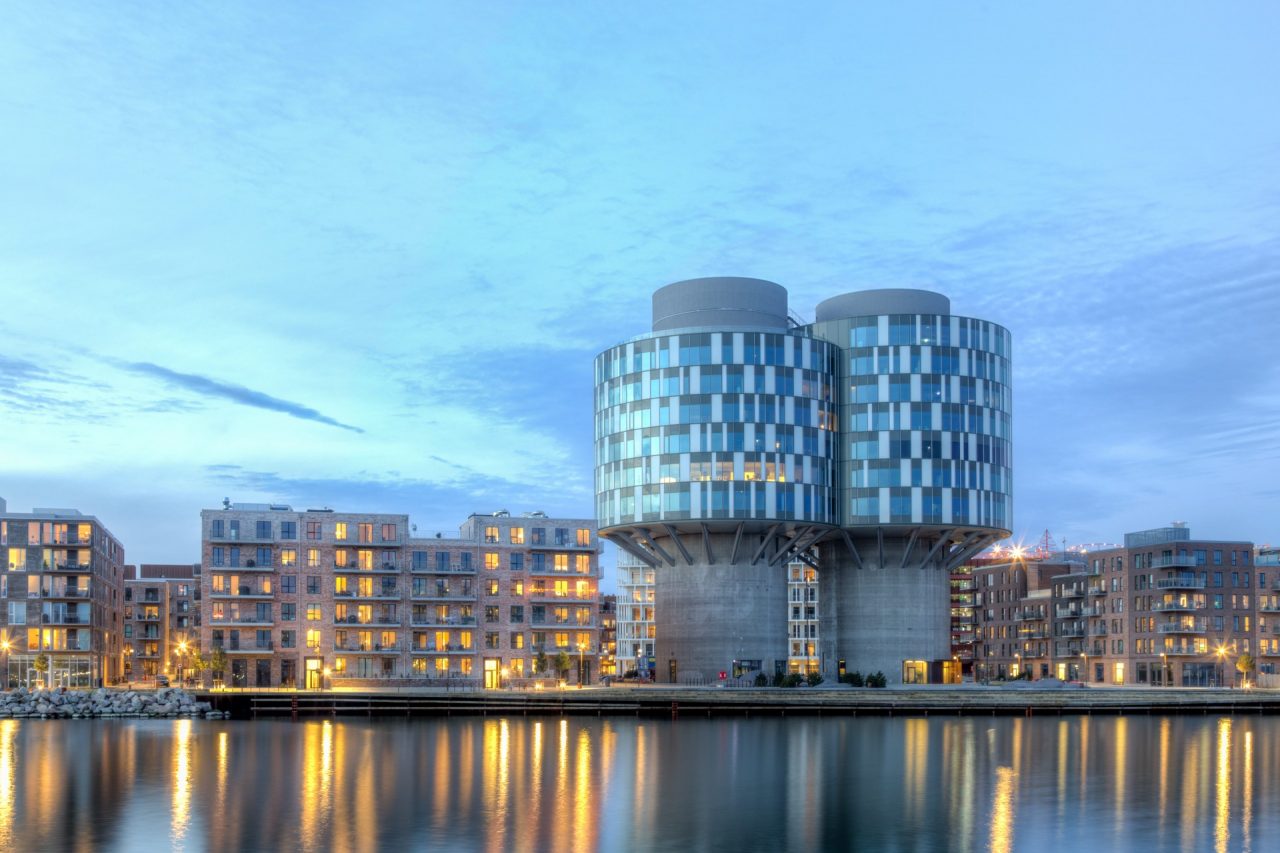For Copenhagen, being considered one of the world’s most livable cities isn’t a given; it’s an achievement that has to be defended day by day, through investments, innovation, and embracing a modern vision of urban coexistence.
Copenhagen has succeeded in bringing all these elements together by launching projects that may appear disconnected, but all point toward the same goal: creating a carbon-neutral city by 2025, on a human scale, using innovative mobility tools. This was the rationale behind Cityringen, a ring-shaped metro line that can transport up to 72 million people annually, constructed by Webuild Group. It was also the rationale for the redevelopment of the Nordhavn area, a risky project that involved transforming an old port into an integrated area, connecting it to the rest of the city by train, making it attractive to investors and offering sustainable housing and a high quality of life to its residents.
Betting on the old Nordhavn port
People in Copenhagen knew that ushering the old Nordhavn port into the modern age wasn’t going to be an easy feat. An ad hoc company was set up to oversee this mission: CPH City & Port Development, 95% owned by the municipality and 5% by the Danish state.
The company was tasked with developing the project and with managing the creation of new urban districts, along with necessary transport infrastructure for residents.
At the heart of this project was the old port, one of Copenhagen’s most historic areas. Once a hub of past industry, it contained blocks of flats and boat docks, and was surrounded by canals, water basins and the open sea. The beauty of the setting only heightened the value of this project. Maintaining Nordhavn’s originality was a priority; the intent was never to distort it but to rehabilitate the neighborhood in a modern and sustainable way.
The new district’s development plan included the construction of squares, pedestrian streets, and meeting spaces, all tools to better facilitate mobility and gatherings. New buildings all fall within the three- to six-floor range, an intentional choice aimed at preserving the original character of Nordhavn and Copenhagen architecture. The plan also capitalised on the prime waterfront location, creating a beautiful promenade right on the sea and a series of spaces, such as swimming pools, docks, and residences by the water.

Sustainable transport to reach Nordhavn
Cityringen set a blueprint for Copenhagen, spelling out how becoming carbon-neutral would only be possible through investing in sustainable transport and ensuring that metro and rail lines (along with bicycles) would become the near-exclusive means of movement in the city.
The Nordhavn redevelopment project also adopted this principle. Not wanting to let the port area become a “cathedral in the desert,” overseers knew the project could only achieve its initial goals if it were interconnected with the rest of the city.
To set the project up for success from the beginning, Nordhavn was designated a “5-minute neighborhood” – a city district where a public transport stop is always within a 5-minute walk. The streets were designed specifically so that pedestrians, cyclists and public transport vehicles could move quickly – more quickly than anyone could by car. And indeed, bicycles and public transport are the most common ways of getting around in the area. The district is served by a local train that stops at Nordhavn Station, along with several buses, which run along a corridor within what’s being referred to as the “green circuit.” With all this in place, only one third of area trips are taken by car.
In addition to what has already been achieved, the future of sustainable transport and its integration with the urban fabric promises to be interesting. CPH City & Port Development plans to build at least one metro line that will reach the neighborhood. The most innovative element is that houses in the area are already being sold with a special clause: prices are higher for those located within 50 meters (164 feet) of the future metro stop. Contracts foresee that owners of these houses will not pay extra forever, but for a 60-year period from the inauguration of the new metro. This is a way of monetising the urban value these houses will gain from their proximity to a sustainable means of transport. At the same time, it increases funding for the construction of the metro itself.
Nordhavn today: a vision brought to life
Today, after completion, the district has become one of Copenhagen’s most attractive hubs. It is home to 40,000 residents and an equal number of workers, within an area that encompasses 165,000 square meters (1.77 million square feet) of residential space and 140,000 square meters (1.5 million square feet) of commercial space.
Most of the spaces included in the first phase of the project sold in a very short time, so CPH City & Port Development is now busy examining how this major urban redevelopment should evolve. The idea is to incorporate another 100 hectares into the project over the next 10 to 20 years, also creating a huge docking point for boats, expected to be over a kilometer long. The funds to finance the works are there, and so are ideas for projects: the dream of a modern, sustainable district is just beginning.

